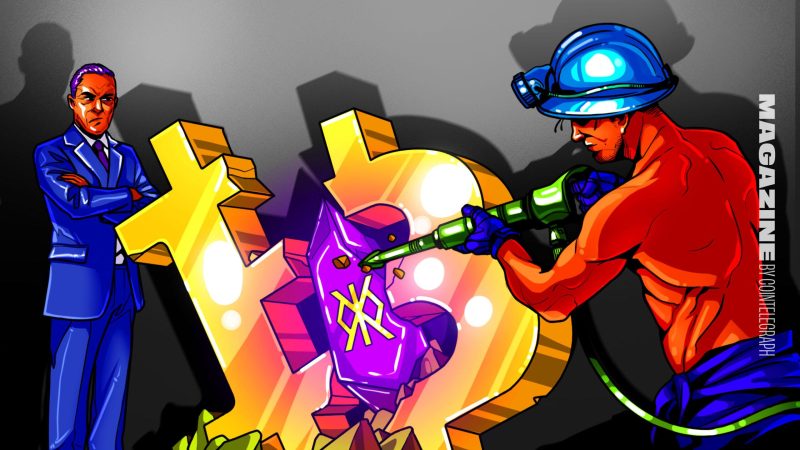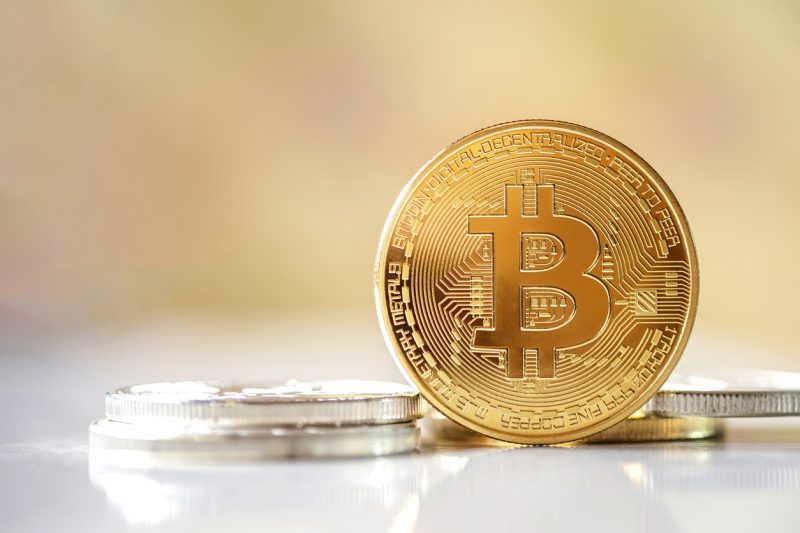[ad_1]
The Bitcoin halving occasion is normally a one-token present. However this yr, it shared the stage with the much-anticipated debut of Runes, a brand new fungible token protocol that stole the highlight.
The Runes launch was accompanied by large hype across the potential of memecoins on the protocol and, to a lesser extent, a recent performance for the Bitcoin community to faucet into the rising curiosity in DeFi.
Regardless of preliminary enthusiasm, Runes has acquired its justifiable share of criticism as a result of its function in escalating Bitcoin’s transaction charges and failure to generate income for many buyers.
On halving day, Bitcoin charges soared to report highs, leading to a beneficiant income bump for miners regardless of their 50% pay cuts on block rewards. The roaring exercise didn’t translate into income for buyers, as the highest 50 Runes by variety of holders are down 30% on common as of April 29, OKX data reveals. Two-thirds of them (34 out of fifty) are within the pink.
Advocates preserve that it’s untimely to low cost Runes, as builders envision a future the place the protocol evolves to offer extra substantial utility, facilitating improved buying and selling experiences and broader adoption throughout the Bitcoin ecosystem.

“I’ve been there when different protocols launched [and] all of them sucked within the first few days,” Quary, the pseudonymous founding father of Bitcoin market Magisat, tells Journal.
“I see no motive to not be bullish [on Runes] within the medium or long run.”
New use circumstances for Bitcoin unlocked
The hype surrounding Runes was “undoubtedly” immense, in accordance with Benjamin Charbit, CEO of metaverse agency Darewise Leisure, a genesis member of the decentralized Bitcoin protocol Opal.
An enormous a part of the joy surrounding Runes comes from the potential capability of memecoins to onboard new retail customers into the Bitcoin ecosystem.
Runes can broaden the performance of the Bitcoin blockchain by enabling customers to tokenize numerous real-world property akin to actual property, shares, commodities, and even different cryptocurrencies akin to stablecoins.
This functionality opens up new prospects for DeFi purposes and different use circumstances throughout the Bitcoin ecosystem.
Learn additionally
“At this time’s Runes interface is probably going not the ultimate iteration, with promising prospects for enhanced user-friendly purposes and providers on the horizon,” says Charbit.
However whereas the longer term might have extra sensible plans for Runes apart from being the most recent crypto on line casino, memecoins are primarily what they’re right this moment.
As of April 29, there have been greater than 349,000 Runes holders, in accordance with knowledge from Rune Alpha. That’s virtually half of the energetic addresses on the community as tracked by on-chain knowledge agency IntoTheBlock.
Lucas Outumuro, head of analysis at IntoTheBlock, points out that Bitcoin’s new addresses have dropped to their lowest ranges in two years.

Following the halving, new addresses dropped to round 267,000. It has kind of stayed in that vary other than just a few spikes, suggesting that the exercise remains to be dominated by veteran customers and degens moderately than retail buyers.
Mike Chavez, an evangelist often known as “Goodthings,” claimed in a current X Areas session hosted by Cointelegraph that the early infrastructure for Runes is “superior to some other fungible token customary in crypto historical past.”
As Chavez identified, Runes was accessible on purposes akin to crypto pockets Xverse from day one.
“We’ve seen an enormous uptick in new customers on the launch of Runes,” Ken Liao, the CEO of Xverse, tells Journal.

“BRC-20 tokens additionally proved that folks need memecoins on Bitcoin,” he says.
BRC-20 tokens and Runes
Though it’s solely somewhat over a yr previous, BRC-20 was the fungible token customary on Bitcoin previous to Runes.
BRC-20s have a posh construction utilizing Ordinals — Bitcoin’s iteration of nonfungible tokens — that require customers to bundle up BRC-20s into NFT-like property to make transactions. It’s a little bit of a faff, so Ordinals creator Casey Rodarmor got here up with Runes as an enchancment.
Runes affords a extra streamlined method to creating fungible tokens on Bitcoin’s blockchain, addressing the muddle of unspent transaction outputs (UTXOs) that always plague BRC-20 tokens. It kicks off transactions by pinpointing unused UTXOs, giving these digital leftovers a brand new objective.
“Runes is a sexy choice for buyers who’re in search of environment friendly token options however might not perceive or wish to cope with the complexity of making NFT-like property which can be required by BRC-20s,” Jonathan Thomas, CEO of decentralized finance platform Blueberry Protocol, tells Journal.
“As Runes stick round, extra customers are going to hop on board after they see another that enables them to create tokens simply as degens do, making Bitcoin’s community extra accessible,” Thomas provides.
Ought to Bitcoin Miners have a good time payment income bump?
Bitcoin’s proof-of-work consensus mechanism sees miners clear up complicated algorithmic issues to confirm transactions and they’re rewarded in Bitcoin.
The most recent halving reduce mining rewards from 6.25 Bitcoin to three.125, that means a pay reduce for miners, which normally leads to some miners switching off machines.
However in a whole reversal of the same old order of issues, Bitcoin miners began making more cash on halving day moderately than much less. Miners had one in all their finest weekends following the halving, raking in $107 million on April 20 alone. Over 75% of that got here from transaction charges because of Rodarmor’s Runes and Ordinals (together with the hunt for “Epic Sats“).
Learn additionally
“Bitcoin charges have dropped for the reason that preliminary launch of Runes, however nonetheless stay two to 3 instances bigger than they had been the week earlier than,” Outumuro tells Journal.
“Miners ought to count on extra transaction payment income coming in as a result of Runes, however it’s more likely to be very cyclical,” he says. “When the market is risk-on, the income will likely be considerably greater than throughout risk-off durations.”

Quarry added that the majority payment spikes would come from the minting of Runes moderately than buying and selling them.
He singles out Z•Z•Z•Z•Z•FEHU•Z•Z•Z•Z•Z, the primary Rune created after the genesis Rune (UNCOMMON•GOODS), as one of many most important culprits that drove exorbitant charges at halving because it processed 1.1 million mints.
Buying and selling actions might pump charges as effectively “however not considerably” as a result of “a lot of the heavy lifting will likely be handed to centralized exchanges the place non to little on-chain exercise really occurs,” he says.
Lower than per week into existence, Runes mission DOG•GO•TO•THE•MOON by Leonidas, co-founder of Ordinals explorer Ord.io, began buying and selling on the change Gate.io.
Not all buying and selling actions will happen off-chain as extra decentralized exchanges for Runes are anticipated to pop up.
Bitcoin Runes will be greater than memecoins
The early iterations of Runes are principally, if not all, fueled by memecoin experiments, however that isn’t essentially the tip sport.
In accordance with Franklin Templeton, an funding agency with $1.6 trillion in property beneath administration, Runes positions Bitcoin to shut the hole with Ethereum and Solana’s fungible tokens markets.
Learn additionally
Runes enhances the BRC-20 method by lowering the buildup of UTXOs.
This extra can clog the community and drive up charges, however Runes streamlines the method, preserving the blockchain working extra easily.
“This helps keep away from creating extra knowledge that may probably bloat the blockchain. This technique additionally permits for embedding a number of token transfers with a single transaction, which, after all, will scale back the entire variety of transactions and knowledge nodes must course of,” says Thomas of Blueberry Protocol.

An environment friendly, fungible token customary is a necessity for DeFi, which unlocks a myriad of economic providers on-chain.
Well-liked decentralized providers on Ethereum, the most important chain for DeFi with over $54 billion in whole worth locked, embrace decentralized exchanges, in addition to lending and borrowing platforms. These use circumstances are facilitated by fungible tokens akin to stablecoins.
“Runes stays a pivotal trendsetter, particularly as extra memecoins and novel initiatives infuse utility into their Rune tokens,” Charbit says, including that Opal is ready so as to add utility, akin to governance and in-game forex mechanics, to its tokens.
In accordance with Liao of Xverse, common customers might not but really feel the potential of Runes as solely the “very primary infrastructure” is at the moment reside.
“However the underlying protocol has enhancements which sooner or later might result in a significantly better expertise in buying and selling and different purposes,” Liao says.
Subscribe
Probably the most participating reads in blockchain. Delivered as soon as a
week.


Yohan Yun
Yohan Yun is a multimedia journalist protecting blockchain since 2017. He has contributed to crypto media outlet Forkast as an editor and has coated Asian tech tales as an assistant reporter for Bloomberg BNA and Forbes. He spends his free time cooking, and experimenting with new recipes.
[ad_2]
Source link




